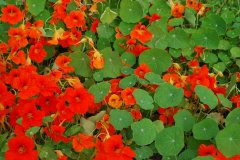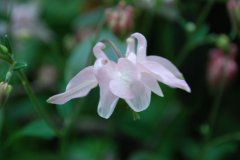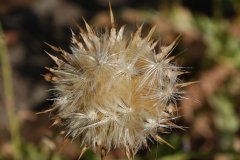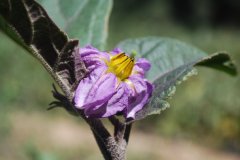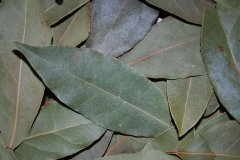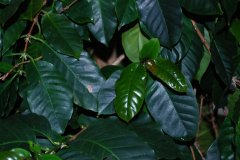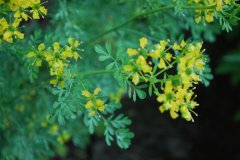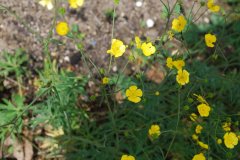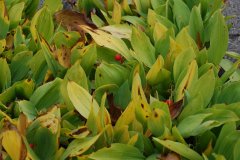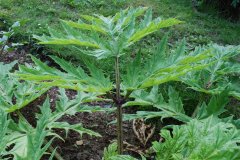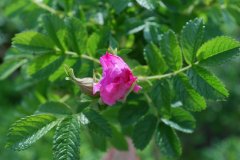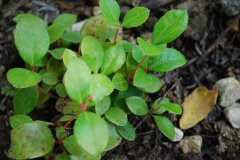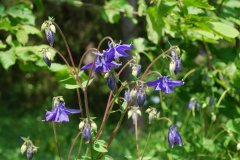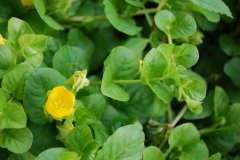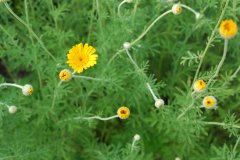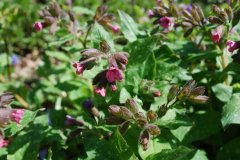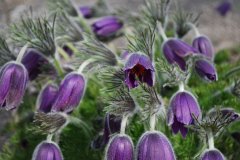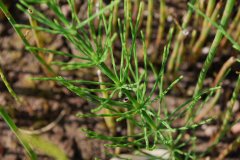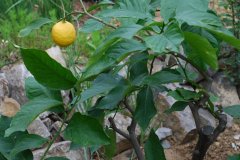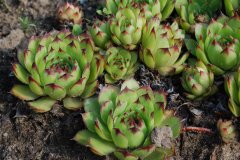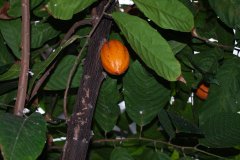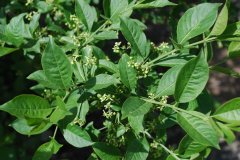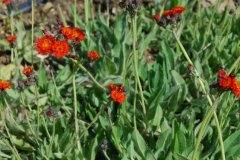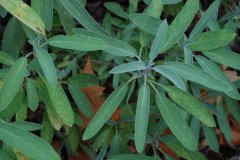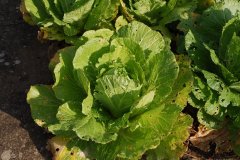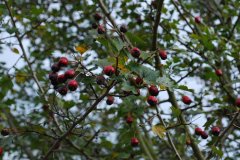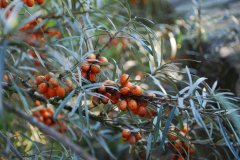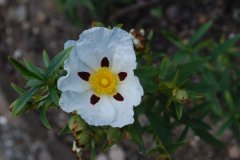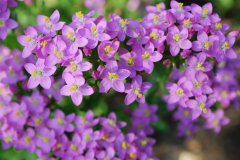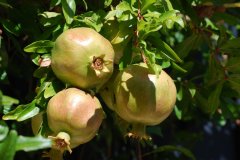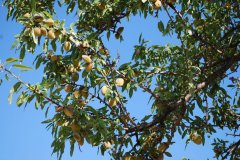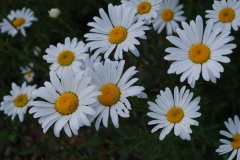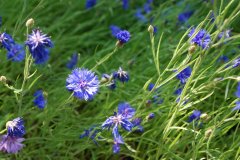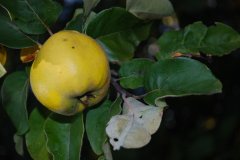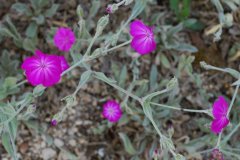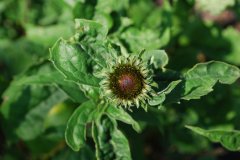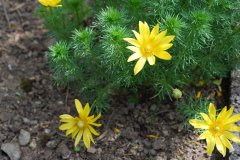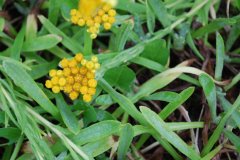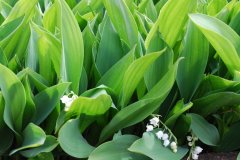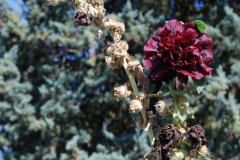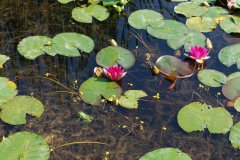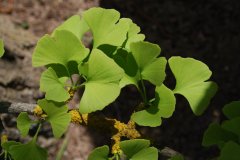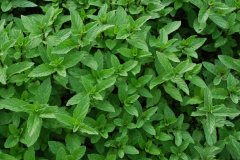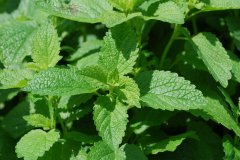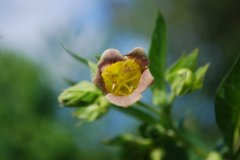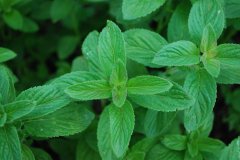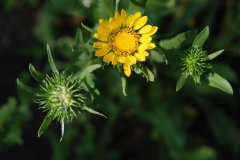Test Showlist
Achillea millefolium - Gemeine Schafgarbe 4.jpg
Adonis vernalis - Adonisroeschen 1.jpg
http://s301092325.online.de/we15/images/pflanzenbilder/Adonis vernalis - Adonisroeschen 1.jpg
Agrostemma githago - Kornrade 1.jpg
http://s301092325.online.de/we15/images/pflanzenbilder/Agrostemma githago - Kornrade 1.jpg
Agrostemma githago - Kornrade 2.jpg
http://s301092325.online.de/we15/images/pflanzenbilder/Agrostemma githago - Kornrade 2.jpg
Alcea rosea - Stockrose 1.jpg
http://s301092325.online.de/we15/images/pflanzenbilder/Alcea rosea - Stockrose 1.jpg
Aloe vera - Curacao-Aloe 1.jpg
http://s301092325.online.de/we15/images/pflanzenbilder/Aloe vera - Curacao-Aloe 1.jpg
Anthemis altissima 1.jpg
http://s301092325.online.de/we15/images/pflanzenbilder/Anthemis altissima 1.jpg
Anthemis tinctoria - Foerber-Kamille 2.jpg
http://s301092325.online.de/we15/images/pflanzenbilder/Anthemis tinctoria - Foerber-Kamille 2.jpg
Aquilegia vulgaris - Akelei 2.jpg
http://s301092325.online.de/we15/images/pflanzenbilder/Aquilegia vulgaris - Akelei 2.jpg
Aquilegia vulgaris - Akelei 3.jpg
http://s301092325.online.de/we15/images/pflanzenbilder/Aquilegia vulgaris - Akelei 3.jpg
Arachis hypogaea - Erdnuss 2.jpg
http://s301092325.online.de/we15/images/pflanzenbilder/Arachis hypogaea - Erdnuss 2.jpg
Atropa bella-donna - Tollkirsche 7.jpg
http://s301092325.online.de/we15/images/pflanzenbilder/Atropa bella-donna - Tollkirsche 7.jpg
Brassica oleracea ssp. capitata var. capitata f. rubra - Rotkohl 1.jpg
Calendula officinalis - Garten-Ringelblume 4.jpg
Centaurea cyanus - Kornblume 1.jpg
http://s301092325.online.de/we15/images/pflanzenbilder/Centaurea cyanus - Kornblume 1.jpg
Centaurea cyanus - Kornblume 2.jpg
http://s301092325.online.de/we15/images/pflanzenbilder/Centaurea cyanus - Kornblume 2.jpg
Centaurium erythraea - Echtes Tausendgueldenkraut 3.jpg
Cerinthe minor - Kleine Wachsblume 1.jpg
http://s301092325.online.de/we15/images/pflanzenbilder/Cerinthe minor - Kleine Wachsblume 1.jpg
Chamomilla recutita - Echte Kamille 3.jpg
http://s301092325.online.de/we15/images/pflanzenbilder/Chamomilla recutita - Echte Kamille 3.jpg
Cichorium intybus ssp. sativus var. foliosum - Chicoree 1.jpg
Cistus ladanifer - Lack-Zistrose 1.jpg
http://s301092325.online.de/we15/images/pflanzenbilder/Cistus ladanifer - Lack-Zistrose 1.jpg
Citrus limon - Zitrone 1.jpg
http://s301092325.online.de/we15/images/pflanzenbilder/Citrus limon - Zitrone 1.jpg
Citrus limon - Zitrone 2.jpg
http://s301092325.online.de/we15/images/pflanzenbilder/Citrus limon - Zitrone 2.jpg
Coffea arabica - Kaffeestrauch 1.jpg
http://s301092325.online.de/we15/images/pflanzenbilder/Coffea arabica - Kaffeestrauch 1.jpg
Conium maculatum - Gefleckter Schierling 5.jpg
Convallaria majalis - Maigloeckchen 1.jpg
http://s301092325.online.de/we15/images/pflanzenbilder/Convallaria majalis - Maigloeckchen 1.jpg
Convallaria majalis - Maigloeckchen 3.jpg
http://s301092325.online.de/we15/images/pflanzenbilder/Convallaria majalis - Maigloeckchen 3.jpg
Coriandrum sativum - Koriander 2.jpg
http://s301092325.online.de/we15/images/pflanzenbilder/Coriandrum sativum - Koriander 2.jpg
Corydalis bulbosa - Hohler Lerchensporn 1.jpg
http://s301092325.online.de/we15/images/pflanzenbilder/Corydalis bulbosa - Hohler Lerchensporn 1.jpg
Crataegus laevigata - Zweigriffeliger Weissdorn 1.jpg
Cydonia oblonga var. maliformis - Quitte Apfelform 2.jpg
Datura metel - Arabischer Stechapfel 2.jpg
http://s301092325.online.de/we15/images/pflanzenbilder/Datura metel - Arabischer Stechapfel 2.jpg
Dianthus carthusianorum - Karthaeuser-Nelke 1.jpg
Dicentra spectabilis - Traenendes Herz 1.jpg
http://s301092325.online.de/we15/images/pflanzenbilder/Dicentra spectabilis - Traenendes Herz 1.jpg
Echinaceae purpurea - Rote Kegelblume 1.jpg
http://s301092325.online.de/we15/images/pflanzenbilder/Echinaceae purpurea - Rote Kegelblume 1.jpg
Equisetum palustre - Sumpf-Schachtelhalm 1.jpg
Euonymus europaeus - Pfaffenhuetchen 1.jpg
http://s301092325.online.de/we15/images/pflanzenbilder/Euonymus europaeus - Pfaffenhuetchen 1.jpg
Euphorbia serrata - Gesaegte Wolfsmilch 1.jpg
http://s301092325.online.de/we15/images/pflanzenbilder/Euphorbia serrata - Gesaegte Wolfsmilch 1.jpg
Fragaria vesca - Wald-Erdbeere 2.jpg
http://s301092325.online.de/we15/images/pflanzenbilder/Fragaria vesca - Wald-Erdbeere 2.jpg
Frangula alnus - Faulbaum 1.jpg
http://s301092325.online.de/we15/images/pflanzenbilder/Frangula alnus - Faulbaum 1.jpg
Frangula alnus - Faulbaum 2.jpg
http://s301092325.online.de/we15/images/pflanzenbilder/Frangula alnus - Faulbaum 2.jpg
Galium odoratum - Waldmeister 1.jpg
http://s301092325.online.de/we15/images/pflanzenbilder/Galium odoratum - Waldmeister 1.jpg
Galium odoratum - Waldmeister 2.jpg
http://s301092325.online.de/we15/images/pflanzenbilder/Galium odoratum - Waldmeister 2.jpg
Galium verum - Echtes Labkraut 2.jpg
http://s301092325.online.de/we15/images/pflanzenbilder/Galium verum - Echtes Labkraut 2.jpg
Gaultheria procumbens - Wintergruen 1.jpg
http://s301092325.online.de/we15/images/pflanzenbilder/Gaultheria procumbens - Wintergruen 1.jpg
Geranium sanguineum - Blut-Storchschnabel 1.jpg
Ginkgo biloba - Ginkgo 1.jpg
http://s301092325.online.de/we15/images/pflanzenbilder/Ginkgo biloba - Ginkgo 1.jpg
Grindelia robusta - Grindelkraut 1.jpg
http://s301092325.online.de/we15/images/pflanzenbilder/Grindelia robusta - Grindelkraut 1.jpg
Grindelia robusta - Grindelkraut 2.jpg
http://s301092325.online.de/we15/images/pflanzenbilder/Grindelia robusta - Grindelkraut 2.jpg
Helichrysum arenarium - Sand-Strohblume 1.jpg
http://s301092325.online.de/we15/images/pflanzenbilder/Helichrysum arenarium - Sand-Strohblume 1.jpg
Helichrysum arenarium - Sand-Strohblume 2.jpg
http://s301092325.online.de/we15/images/pflanzenbilder/Helichrysum arenarium - Sand-Strohblume 2.jpg
Helichrysum arenarium - Sand-Strohblume 3.jpg
http://s301092325.online.de/we15/images/pflanzenbilder/Helichrysum arenarium - Sand-Strohblume 3.jpg
Helleborus viridis - Gruene Nieswurz 1.jpg
http://s301092325.online.de/we15/images/pflanzenbilder/Helleborus viridis - Gruene Nieswurz 1.jpg
Heracleum sphondylium - Wiesenbaerenklau 1.jpg
Hieracium aurantiacum - Orangerotes Habichtskraut 1.jpg
Hieracium lanatum - Wolliges Habichtskraut 1.jpg
Hippophae rhamnoides - Sanddorn 1.jpg
http://s301092325.online.de/we15/images/pflanzenbilder/Hippophae rhamnoides - Sanddorn 1.jpg
Humulus lupulus - Hopfen 1.jpg
http://s301092325.online.de/we15/images/pflanzenbilder/Humulus lupulus - Hopfen 1.jpg
Juglans regia - Echte Walnuss 2.jpg
http://s301092325.online.de/we15/images/pflanzenbilder/Juglans regia - Echte Walnuss 2.jpg
Laurus nobilis - Lorbeer 1.jpg
http://s301092325.online.de/we15/images/pflanzenbilder/Laurus nobilis - Lorbeer 1.jpg
Leucanthemum vulgare - Margerite 1.jpg
http://s301092325.online.de/we15/images/pflanzenbilder/Leucanthemum vulgare - Margerite 1.jpg
Lysimachia nummularia - Pfennigkraut 1.jpg
http://s301092325.online.de/we15/images/pflanzenbilder/Lysimachia nummularia - Pfennigkraut 1.jpg
Melissa officinalis - Melisse 4.jpg
http://s301092325.online.de/we15/images/pflanzenbilder/Melissa officinalis - Melisse 4.jpg
Mentha aquatica - Bachminze 1.jpg
http://s301092325.online.de/we15/images/pflanzenbilder/Mentha aquatica - Bachminze 1.jpg
Mentha piperita - Echte Pfefferminze 1.jpg
http://s301092325.online.de/we15/images/pflanzenbilder/Mentha piperita - Echte Pfefferminze 1.jpg
Mentha piperita - Echte Pfefferminze 8.jpg
http://s301092325.online.de/we15/images/pflanzenbilder/Mentha piperita - Echte Pfefferminze 8.jpg
Nymphaea - Seerose 2.jpg
http://s301092325.online.de/we15/images/pflanzenbilder/Nymphaea - Seerose 2.jpg
Paeonia officinalis - Pfingstrose 2.jpg
http://s301092325.online.de/we15/images/pflanzenbilder/Paeonia officinalis - Pfingstrose 2.jpg
Prunus dulcis - Mandelbaum 1.jpg
http://s301092325.online.de/we15/images/pflanzenbilder/Prunus dulcis - Mandelbaum 1.jpg
Pulmonaria officinalis - Lungenkraut 1.jpg
http://s301092325.online.de/we15/images/pflanzenbilder/Pulmonaria officinalis - Lungenkraut 1.jpg
Pulsatilla vulgaris - Kuhschelle 1.jpg
http://s301092325.online.de/we15/images/pflanzenbilder/Pulsatilla vulgaris - Kuhschelle 1.jpg
Punica granatum - Granatapfel 1.jpg
http://s301092325.online.de/we15/images/pflanzenbilder/Punica granatum - Granatapfel 1.jpg
Ranunculus acris - Scharfer Hahnenfuss 1.jpg
http://s301092325.online.de/we15/images/pflanzenbilder/Ranunculus acris - Scharfer Hahnenfuss 1.jpg
Rauvolfia serpentina - Indische Schlangenwurzel 1.jpg
Rauvolfia serpentina - Indische Schlangenwurzel 2.jpg
Rubus fruticosus - Echte Brombeere 1.jpg
http://s301092325.online.de/we15/images/pflanzenbilder/Rubus fruticosus - Echte Brombeere 1.jpg
Ruta graveolens - Weinraute 3.jpg
http://s301092325.online.de/we15/images/pflanzenbilder/Ruta graveolens - Weinraute 3.jpg
Salvia officinalis - Echter Salbei 1.jpg
http://s301092325.online.de/we15/images/pflanzenbilder/Salvia officinalis - Echter Salbei 1.jpg
Sempervivum tectorum - Dachwurz 1.jpg
http://s301092325.online.de/we15/images/pflanzenbilder/Sempervivum tectorum - Dachwurz 1.jpg
Silene coronaria - Kronen-Lichtnelke 1.jpg
http://s301092325.online.de/we15/images/pflanzenbilder/Silene coronaria - Kronen-Lichtnelke 1.jpg
Silybum marianum - Mariendistel 2.jpg
http://s301092325.online.de/we15/images/pflanzenbilder/Silybum marianum - Mariendistel 2.jpg
Silybum marianum - Mariendistel 4.jpg
http://s301092325.online.de/we15/images/pflanzenbilder/Silybum marianum - Mariendistel 4.jpg
Silybum marianum - Mariendistel 5.jpg
http://s301092325.online.de/we15/images/pflanzenbilder/Silybum marianum - Mariendistel 5.jpg
Solanum melongena - Aubergine 2.jpg
http://s301092325.online.de/we15/images/pflanzenbilder/Solanum melongena - Aubergine 2.jpg
Tagetes patula - Studentenblume 1.jpg
http://s301092325.online.de/we15/images/pflanzenbilder/Tagetes patula - Studentenblume 1.jpg
Tanacetum cinerariifolium - Dalmatinische Insektenblume 1.jpg
Theobroma cacao - Kakao 1.jpg
http://s301092325.online.de/we15/images/pflanzenbilder/Theobroma cacao - Kakao 1.jpg
Tropaeolum majus - Grosse Kapuzinerkresse 1.jpg
Tropaeolum majus - Grosse Kapuzinerkresse 2.jpg
Rosa centifolia - Zentfolie Kohlrose 1.jpg
http://s301092325.online.de/we15/images/pflanzenbilder/Rosa centifolia - Zentfolie Kohlrose 1.jpg
Erkältungskrankheiten umfassend therapieren: Über den Einsatz von Senfölen und Bitterstoffen
Im Verlauf von Erkältungskrankheiten, die meist viraler Genese sind, kommt es nicht selten zur Ausbildung einer zusätzlichen bakteriellen Infektion.
„Zur Therapie von akuten unkomplizierten Infektionen der Atemwege, wie zum Beispiel Bronchitis oder Sinusitis, sollten daher vorzugsweise multimodal wirksame pflanzliche Antiinfektiva wie die Isothiocyanate aus Kapuzinerkresse und Meerrettich eingesetzt werden“, sagt Dr. Dr. Erwin Häringer, Arzt für Allgemeinmedizin und Naturheilkunde, München.
Die Senfölkombination bekämpft Viren [Literatur 1-3] und Bakterien [Literatur 4-12] und kann somit der Entstehung von Superinfektionen entgegenwirken. Die Pflanzenstoffe haben zudem ein großes antiphlogistisches Potenzial [Literatur 13-21].
Um bei häufig begleitend auftretendem Erkältungshusten zusätzlich sekretolytische Therapieeffekte zu erzielen, können ergänzend Phytotherapeutika mit Andorn – die Arzneipflanze des Jahres 2018 – zum Einsatz kommen.
„Auf diese Weise können Erkältungskrankheiten umfassend behandelt werden“, so Häringer weiter.
Die zunehmende Beliebtheit von Phytotherapeutika hält unvermindert an. Vor allem bei Erkältungskrankheiten setzen viele Betroffenen auf pflanzliche Präparate – bevorzugt auf solche, deren Wirkung umfangreich belegt ist. So zählen Senföle heute zu den am besten untersuchten arzneilich wirksamen Pflanzensubstanzen. Für den Nachweis der dreifach wirksamen Isothiocyanat-Mischung aus Kapuzinerkressekraut und Meerrettichwurzel liegen zahlreiche Forschungsarbeiten vor.
Wird die Erkältung von lästigem Husten begleitet, kann ergänzend zu den Isothiocyanaten die Arzneipflanze Andorn zum Einsatz kommen. Die Pflanzenmedizin besitzt antiphlogistische [Literatur 22, 23], spasmolytische [Literatur 24, 25] und bei festsitzendem Schleim sekretolytische [Literatur 26] Eigenschaften.
„Der Andorn ist heutzutage außerhalb von Fachkreisen nahezu unbekannt“, sagt Dr. Johannes Gottfried Mayer, Sprecher der Forschergruppe Klostermedizin aus Würzburg.
„Dabei wurde Marrubium vulgare – so lautet der lateinische Name des Andorns – bereits vor über 2.000 Jahren bei Katarrhen der Atemwege, insbesondere Bronchitis, eingesetzt und zählte von der Antike bis weit in die Neuzeit zu den wichtigsten Arzneipflanzen Europas“, so Mayer weiter.
Spätestens seit dem 8. Jahrhundert war der Andorn fester Bestandteil der Klosterkräutergärten, geriet anschließend aber in Vergessenheit. Mit der Wahl zur Arzneipflanze des Jahres 2018 durch den Studienkreis Entwicklungsgeschichte der Arzneipflanzenkunde an der Universität Würzburg hat die traditionsreiche Arzneipflanze wieder zunehmenden Bekanntheitsgrad erlangt.
Andorn enthält neben dem Bitterstoff Marrubiin zahlreiche Flavonoide und Gerbstoffe. Besonders die Bitterstoffe aus der Pflanze scheinen neuen Erkenntnissen zufolge von bedeutender therapeutischer Relevanz zu sein. Sie stimulieren spezifische Rezeptoren im Bronchialtrakt, wodurch die Ausschüttung von antibakteriellen Substanzen und eine Bronchodilatation getriggert wird [Literatur 27]. Zudem weist eine Studie von Wissenschaftlern aus den USA darauf hin, dass die gezielte Stimulation der Bitterrezeptoren eine Stärkung des Immunsystems zu bewirken vermag [Literatur 28]. Eine verstärkte Stimulation der Bitterrezeptoren könnte einen größeren Schutz vor Infektionen bieten, während eine niedrigere Funktion die Anfälligkeit für Infekte erhöht, schlussfolgern die Forscher.
Die Wirkstoffe aus der Pflanze gibt es in arzneilich wirksamer Form als Presssaft oder als hochkonzentrierten Andornkraut-Fluidextrakt, der bei Husten im Rahmen von Erkältungen eingesetzt wird und nur in Apotheken erhältlich ist.
Literaturnachweise:
1. Pleschka S. et al. Testing of the antiviral activity of ANGOCIN® Anti-Infekt N mixture on influenza virus A/Hamburg/01/09 (H1N1) replication on MDCK-II-cells and A549-cells via Focus- and HA-Assay; Publikation in Vorbereitung
2. Sprössig M. et al. Zeitschr. f. Hygiene, Band 143, S. 215-225 (1956)
3. Winter A.G., Willeke L. Arch. Mikrobiol. 31, S. 311-318 (1958)
4. Conrad A. et al. Broad spectrum antibacterial activity of a mixture of isothiocyanates from nasturtium (Tropaeoli majoris herba) and horseradish (Armoraciae rusticanae radix). Drug Res 63: 65–68 (2013)
5. Conrad A. et al. In-vitro-Untersuchungen zur antibakteriellen Wirksamkeit einer Kombination aus Kapuzinerkressekraut (Tropaeoli majoris herba) und Meerrettichwurzel (Armoraciae rusticanae radix), Drug Res 56/12: 842-849 (2006)
6. Dufour V. et al. The antibacterial properties of isothiocyanates. Microbiology 161: 229-243 (2015)
7. Aires A. et al. The antimicrobial effects of glucosinolates and their respective enzymatic hydrolysis products on bacteria isolated from the human intestinal tract. Journal of applied Microbiology 106: 2086-2095 (2009)
8. Borges A. et al. Antibacterial activity and mode of action of selected glucosinolates hydrolysis products against bacterial pathogens. J Food Sci Technol 52 (8): 4737- 48 (2015)
9. Dias C. et al. Antimicrobial activitiy of isothiocyanates from cruciferous plants against methicillin-resistant Staphylococcus aureus (MRSA). Int. J. Mol. Scji. 15: 19552-19561 (2014)
10. Kurepina N. et al. Growth-inhibitory activity of natural and synthetic isothiocyanates against representative human microbial pathogens, Journal of applied mi-crobiology 115, 943-954 (2013)
11. Kaiser S.J. et al. Natural isothiocyanates express antimicrobial activity against developing and mature biofilms of Pseudomonas aeruginosa, Fitoterapia 119 (2017)
12. Romeo I. et al. An overview of their antimicrobial activity against human infections, Molecules 3 (2017)
13. Herz C. et al. Evaluation of an aqueous extract from horseradish root (Armoracia rusticana radix) gainst lipopolysaccharide-induced cellular inflammation reaction. Evidence-Based Complementary and Alternative Medicine, Volume 2017, Article ID 1950692 (2017)
14. Marzocco A. et al. Anti-inflammatory activity of horseradisch (Armoracia rusticana) root extracts in LPS-stimulated macrophages. Food Func. 6 (12): 3778-88 (2015)
15. Dey M. et al. In-vitro and in-vivo anti-Inflammatory activity of a seed preparation containing phenethylisothiocyanate, Journal of pharmacology and experimental therapeutics 317(1): 326-333 (2006)
16. Tsai J. et al. Suppression of inflammatory mediators by cruciferous vegetable-derives indole-3-carbinole and phenylethylisothiocyanate in lipopolysaccharide activated macrophages, Mediators of Inflammation (2010)
17. Boyanapalli S.S. et al. Nrf2 knockout attenuates the anti-Inflammatory effects of phenethylIsothiocyanate and curcumin, Chem. Res. Toxicol., 27 (12), pp 2036–2043 (2014)
18. Cheung K.L. et al. Synergistic effect of combination of phenethylisothiocyanate and sulforaphane or curcumin and sulforaphane in the inhibition of inflammation, Pharmaceutical Research, Volume 26, Issue 1, pp 224–231(2009)
19. Tran H. et al. Nasturtium (Indian cress, Tropaeolum majus nanum) dually blocks the COX an LOX pathway in primary human immune cells, Phytomedicine 23: 611-620 (2016)
20. Marton M.R. et al. Determination of bioactive, free isothiocyanates from a glucosinolate-containing phytotherapeutic agent: A pilot study with in vitro models and human intervention, Fitoterapia 85: 25-34 (2013)
21. Lee M.L. et al. Benzyl isothiocyanate exhibits anti-inflammatory effects in murine macrophages and in mouse skin, J Mol Med 87: 1251-1261 (2009)
22. Yousefi K. et al. Marrubium vulgare L. methanolic extract inhibits inflammatory response and prevents cardiomyocyte fibrosis in isoproterenol-induced acute myocardial infarction in rats. BioImpacts: BI 4.1 (2014)
23. Kanyonga P.M. et al. Assessment of methanolic extract of Marrubium vulgare for antiinflammatory, analgesic and anti-microbiologic activities. J Chem Pharm Res 3 (1): 199-204 (2011)
24. Jorge V.G. et al. Vasorelaxant effect of ethanolic extracts from M. vulgare: Mexican medicinal plant as potential source for bioactive molecules isolation. Indo Global Journal of Pharmaceutical Sciences (2013)
25. Schlemper V. et al. Antispasmodic effects of hydroalcoolic extract of Marrubium vulgare on isolated tissues. Phytomedicine 3 (2): 211–216 (1996)
26. Community herbal monograph and assessment report on Marrubium vulgare L., herba. European Medicines Agency (EMA), Committee on herbal medicinical products (HMPC)/604273/2012 (2012)
27. Deshpande D.A. et al. Bitter taste receptors on airway smooth muscle bronchodilate by localized calcium signaling and reverse obstruction. Nature Medicine EPub, abstract 24 Oct 2010 (2010)
28. Lee R.J. et al. Bitter Taste Bodyguards. Scientific American 314: 38 - 43 (2016)
Letzte Änderungen
- Was erzählt die Vita über Hildegard als Heilerin?
- Flüsse und Blüten: Menstruation, weibliche Physiologie und sexuelle Begierde bei Trota von Salerno und Hildegard von Bingen
- Warum war das Bild zur Epoche der Klostermedizin so lange schief und ist es zum Teil bis heute?
- Hildegard von Bingen, Mondfinsternis und das Eruptionscluster 1108–1110
- Presseschau zur Schafgarbe (Arzneipflanze des Jahres 2025)
- Arzneikürbis - Cucurbita pepo L., Cucurbitaceae
- Publikationen zu Autoren & Werken
- Publikationen zur Klostermedizin
- Publikationen zu Pflanzen
- Aktuelles und Termine
- Knoblauch - Allium sativum L., Alliaceae
- Andorn - Marrubium vulgare L., Lamiaceae
- Angelika - Angelica archangelica L., Apiaceae
- Apfelbeere - Aronia MEDIK., Rosaceae
- Sesam - Sesamum indicum L., Pedaliaceae
- Rosen - Rosa-Arten: Rosa gallica L., Rosa centifolia L., Rosa canina L.
- Weißdorn - Crataegus monogyna JACQ.; Crataegus laevigata (POIR.) DC.; Crataegus nigra WALDST. & KIT.
- Mariendistel - Silybum marianum (L.) GAERTNER, Asteraceae
- Lorbeer - Laurus nobilis L., Lauraceae
- Rizinus - Ricinus communis L., Euphorbiaceae
- Arnika - Arnica montana L., Asteraceae
- Ginkgo - Ginkgo biloba L., Ginkgoaceae
- Eukalyptusbaum - Eucalyptus globulus LABILL., Myrtaceae
- Schöllkraut - Chelidonium majus L., Papaveraceae
- Myrte – Myrtus communis, Myrtaceae
- Gewürzsumach - Rhus aromatica AIT., Anacardiaceae
- Borretsch - Borago officinalis L., Boraginaceae
- Keuschlamm oder Mönchspfeffer - Vitex agnus-castus L., Lamiaceae
- Schafgarbe - Achillea millefolium L., Asteraceae
- Beinwell - Symphytum officinale L., Boraginaceae
- Huflattich - Tussilago farfara L., Asteraceae
- Sägepalme - Serenoa repens (BARTR.) SMALL, Arecaceae
- Johanniskraut - Hypericum perforatum L., Hypericaceae
- Presseschau zur Blutwurz (Arzneipflanze des Jahres 2024)
- Pfefferminze - Mentha x piperita L., Lamiaceae
- Alant - Inula helenium L., Asteraceae
- Acker-Schachtelhalm oder Zinnkraut - Equisetum arvense L.
- Aus dem Alltag eines Medizinhistorikers
- Hat Hildegard von Bingen kolloidales Silber empfohlen?
- Woher bekommt man verlässliche Informationen zur Pflanzenheilkunde?
- Literatur
- Arzneipflanze des Jahres 2025: Gemeine Schafgarbe - Achillea millefolium
- Arzneipflanze des Jahres 2024: Blutwurz - Potentilla erecta
- Die Mitglieder
- “Drink before breakfast and vomit”: Zur Geschichte von Hamamelis in Amerika und Europa
- Arzneipflanze des Jahres 2023: Echter Salbei - Salvia officinalis
- Presseschau zum Echten Salbei (Arzneipflanze des Jahres 2023)
- Neues Supermittel: Weg mit Kokos, her mit Ginseng!
- Supermondfinsternis
- Presseschau zum Mönchspfeffer (Arzneipflanze des Jahres 2022)
- Arzneipflanze des Jahres 2022: Mönchspfeffer, Keuschlamm - Vitex agnus-castus
- Fasten (21): Fasten bei Hildegard von Bingen
- Goethe und das Coffein
- Presseschau zum Myrrhenbaum (Arzneipflanze des Jahres 2021)
- Impressum
- Arzneipflanze des Jahres 2021: Myrrhenbaum - Commiphora myrrha
- Deutsches Arzneibuch 6 und Ergänzungsbuch 6
- Kann man sich gegen Infektionen schützen?
- Kontakt
- Fortbildung
- Neuer Ausbildungskurs Klostermedizin und Phytotherapie
- Presseschau zum Lavendel (Arzneipflanze des Jahres 2020)
- Arzneipflanze des Jahres 2020: Echter Lavendel - Lavandula angustifolia
- Weihnachtsgewürze
- Fasten (31): Die Wurzeln des modernen Heilfastens
- Zum 838. Todestag von Hildegard von Bingen
- Presseschau zum Weißdorn (Arzneipflanze des Jahres 2019)
- Immenblatt - Weiße Taubnessel - Zitronenmelisse: Eine Verwechslungsgeschichte über Jahrtausende
- Wir hatten uns doch noch so viel vorgenommen...
- Senföle bekämpfen bakterielle Erreger auf mehreren Ebenen
- Förderung der pankreatischen Restfunktion bei EPI-Patienten durch Rizoenzyme aus Reispilzen
- Feinstaub ohne Feinsinn?
- Zur Kräuterweihe an Mariä Himmelfahrt
- Von tatsächlichen und angeblichen Krebsmitteln aus der Natur
- Erkältungskrankheiten umfassend therapieren: Über den Einsatz von Senfölen und Bitterstoffen
- Buchtipp: Pflanzliche Arzneimittel - was wirklich hilft
- A View to a Kill? Im Angesicht des Todes?
- Mikronährstoffe zwischen Nutzen und Risiko
- Ätherische Öle bei Lyme-Borreliose: Laborstudie deutet auf gute Wirksamkeit verschiedener pflanzlicher Öle hin
- Vorträge in Kooperation mit dem Bund Naturschutz
- Arzneipflanze des Jahres 2019: Weißdorn - Crataegus
- Zum Begriff Naturheilkunde, gängigen Strömungen und zur Abgrenzung des Begriffes
- Die Forschergruppe im ZDF ("Terra X: Drogen – Eine Weltgeschichte")
- Neue internationale Meta-Analyse bestätigt: Senföle aus Kapuzinerkresse und Meerrettich wirken natürlich gegen Krankheitserreger
- Überlebenschancen nach "alternativer" Krebsbehandlung
- Naturheilkunde in der Krebstherapie
- Themenheft Klostermedizin der "Deutschen Heilpraktiker-Zeitschrift"
- Novartis stoppt Antibiotika-Entwicklung: Pflanzliche Alternativen jetzt noch wichtiger
- Antibakterielle Wirkung von ätherischen Ölen verschiedener Lippenblütler
- Fasten: Ein wiederentdeckter Weg zu Wohlbefinden und seelischem Gleichgewicht
- Zum 100. Geburtstag von Heinrich Schipperges
- Alle Jahre wieder: Bärlauchzeit
- Zur Geschichte von Bärlauch als Heilpflanze
- Intestinale spasmolytische Wirkung von Myrrhe, Kamille und Kaffeekohle bestätigt
- Pflanzliche Senföle und Andornkraut: Erkältungskrankheiten pflanzlich therapieren – Antibiotikaresistenzen vermeiden
- Wirkungsvolle Aloe
- Myrrhe bei chronisch-entzündlichen Darmerkrankungen (CED) vielfältig einsetzbar
- Königsfarn bei Kopf-Hals-Karzinomen
- Zur Evidenz von Traubensilberkerze bei Wechseljahresbeschwerden
- Cannabis: CBD-Produkte aus dem Internet sind oft falsch deklariert







